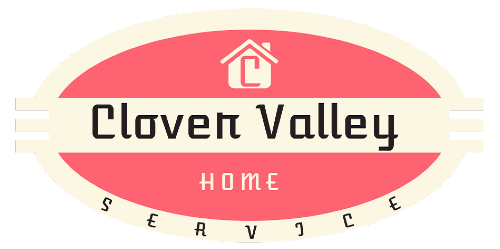Hardie Board Siding vs. Traditional Siding: Pros and Cons
Traditional siding options like wood, vinyl, and aluminum offer customizable styles and colors, with wood requiring periodic maintenance like repainting or restaining to maintain its appearance.
Selecting the appropriate siding for a home is a significant decision that impacts its appearance, durability, and maintenance requirements. Hardie Board siding has gained popularity as an alternative to traditional siding options such as vinyl, wood, and aluminum. Understanding the pros and cons of Hardie Board siding compared to traditional siding can help homeowners make an informed decision that best suits their preferences.
Durability and Longevity
Hardie Board Siding
Hardie Board siding is known for its incredible durability. Because it is made from a blend of cement, sand, and cellulose fibers, this siding is resistant to common issues that affect traditional siding materials. It can withstand high winds, hail, and extreme temperatures. Additionally, Hardie Board is resistant to rot, pests, and fire, making it a long-lasting option that can maintain its integrity for decades with minimal maintenance.
Traditional Siding
Traditional siding materials, such as wood and vinyl, have varying levels of durability. Wood siding can be susceptible to rot, insect damage, and warping over time, especially in humid or rainy climates. Vinyl siding is more resistant to moisture and pests but can become brittle and crack in extreme cold or warp in excessive heat. Aluminum siding offers good durability but can dent easily. Traditional siding materials may require more frequent maintenance and repairs than Hardie Board siding.
Aesthetic Appeal
Hardie Board Siding
Hardie Board siding offers a variety of design options, including various textures, colors, and styles made to look like wood, stucco, and other traditional materials. This versatility allows for achieving a custom look that enhances the curb appeal of homes. The color of Hardie Board siding is often applied using a baked-on finish, which resists fading and chipping, maintaining its vibrant appearance for years.
Traditional Siding
Traditional siding materials also come in various styles and colors, allowing for customization. Wood siding offers a classic look that can be stained or painted in any color. Vinyl siding is available in a range of colors and styles, including options that mimic wood grain. Aluminum siding provides a sleek, modern appearance. However, traditional siding materials may require repainting or restaining over time to maintain their aesthetic appeal, particularly wood siding.
Maintenance Requirements
Hardie Board Siding
One significant advantage of Hardie Board siding is its low maintenance requirements. Since it is resistant to rot, pests, and fire, it does not need frequent repairs or treatments. An annual cleaning with a garden hose and a soft brush is usually sufficient to keep it looking its best. The baked-on color finish also reduces the need for repainting, making it a convenient choice for those seeking a low-maintenance option.
Traditional Siding
Maintenance requirements for traditional siding materials vary. Wood siding needs regular painting to protect it from moisture and insect damage, as well as periodic inspections for signs of rot or decay. Vinyl siding is relatively low-maintenance but may need occasional cleaning to remove dirt and mildew. Aluminum siding requires less maintenance than wood but can dent easily and may need repainting if the color fades. Traditional siding materials typically require more ongoing maintenance than Hardie Board siding.
Cost Considerations
Hardie Board Siding
The initial cost of Hardie Board siding is generally higher than traditional siding materials such as vinyl or aluminum. However, its durability and low maintenance requirements can make it a cost-effective choice in the long run. The reduced need for repairs, repainting, and replacement can offset the higher upfront cost, providing value over the siding's lifespan.
Traditional Siding
Traditional siding materials often have lower initial costs compared to Hardie Board siding. Vinyl and aluminum siding are typically more affordable options, making them attractive for budget-conscious homeowners. Wood siding can vary in cost depending on the type of wood used. While traditional siding materials may be less expensive initially, the higher maintenance and potential for more frequent repairs can increase the overall cost over time.
Environmental Impact
Hardie Board Siding
Hardie Board siding is considered an environmentally friendly option due to its durability and longevity. The long lifespan of Hardie Board siding means fewer replacements and less waste over time. Additionally, the production process of fiber cement siding involves the use of sustainable materials, contributing to its eco-friendly profile.
Traditional Siding
The environmental impact of traditional siding materials varies. Wood siding can be a sustainable option if sourced from responsibly managed forests, but it requires regular treatments with chemicals that may be harmful to the environment. Vinyl siding is made from PVC, a plastic material that can have environmental concerns related to its production and disposal. Aluminum siding is recyclable, making it a more environmentally friendly option compared to vinyl.
When choosing between Hardie Board siding and traditional siding, it's important to look at factors such as durability, aesthetic appeal, maintenance requirements, cost, and environmental impact. Hardie Board siding offers exceptional durability, low maintenance, and a range of design choices, making it a strong contender for homeowners seeking a long-lasting and visually appealing solution. Traditional siding materials, while often more affordable initially, may require more frequent maintenance and repairs. Evaluating these factors can help homeowners make an informed choice that enhances the value of the home.
Clover Valley Home Service offers reliable service in plumbing, electrical, Trim Carpentry & Built-Ins, hardie board siding, stucco repair, and interior and exterior door. Our work is guaranteed. Call (916) 742-3141 today!

